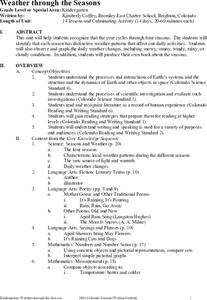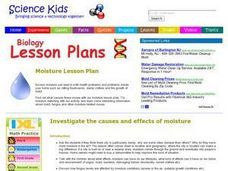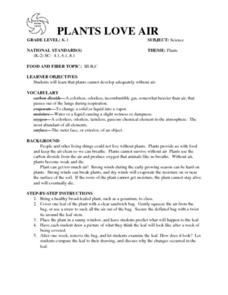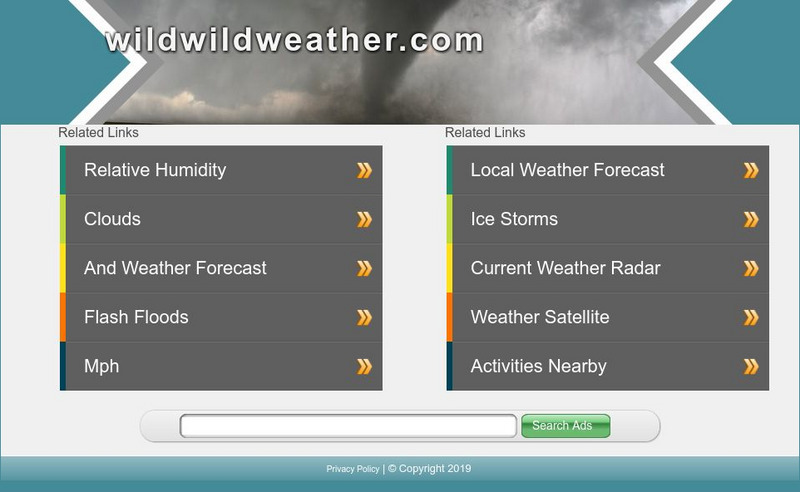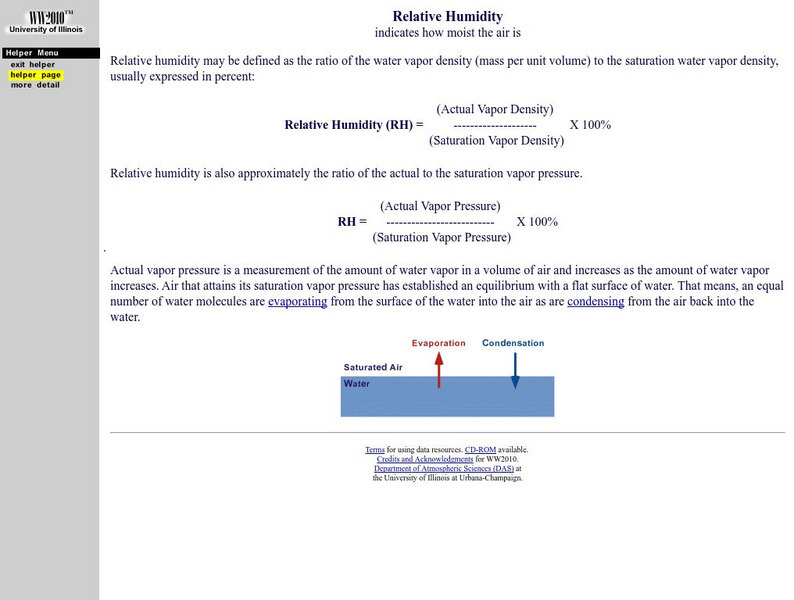Curated OER
"Lettuce" Learn About the Water Cycle
Young scientists investigate the water cycle through a lettuce seed experiment. For this experiment, learners plant lettuce seeds inside of a ziplock bag in order to create a small greenhouse. They observe condensation and precipitation,...
Curated OER
Weather or Not...
Learners observe many different types of weather conditions, they become aware of variations in sunlight, clouds, wind, and forms of moisture. They discover the techniques, brush strokes, and colors that artists such as Charles...
Curated OER
Weathering the Weather
A fine weather poem sets the tone for this short lesson on the natural phenomena that affects weather. Weather topics covered are, air moisture, temperature, pressure, direction/speed, and clouds.
Curated OER
Terrestrial Hi-Lo Hunt
Students assess environmental factors. In this environmental factors lesson, students explore their surroundings identifying warm and cool spots, dry and wet areas, and determining the warmest and coolest areas. Students analyze their...
Curated OER
What is Weather?
In this weather learning exercise, students photograph and record the weather conditions for a week. Then they list the types of clouds observed and the weather conditions they noted associated with each cloud type. Students also write a...
Curated OER
The Respiratory System
In this respiratory system worksheet, students label the parts of the respiratory system shown in the given diagram. Then they write the name of the structure described on the line. Students also determine the difference between inhale...
Curated OER
Weather through the Seasons
Students examine the year's cycles by observing the four seasons, their distinctive weather patterns that affect our activities and the weather changes that each brings. The fourteen lessons of this unit offer a good opportunity for the...
Curated OER
Moisture Lesson Plan
Students investigate the effects of moisture and dampness on homes, clothing, and mold growth. In this moisture instructional activity, students discuss which certain cities are damper than others based on location and geography. They...
Curated OER
Evergreen Trees & Softwood
For this earth science worksheet, students identify and locate various vocabulary terms pertaining to evergreen trees and other softwood trees. There are 26 earth science terms located in the word search.
Curated OER
PLANTS LOVE AIR
Young scholars identify that plants cannot develop adequately without air and predict what happens to the leaf of a geranium brought to class. They draw a picture of what they think the leaf will look like after a week of being covered....
American Chemical Society
Inquiry in Action: Exploring Moisture on the Outside of Cold Cup
In this activity, students investigate how condensation causes moisture to form on the outside of a cold cup. To see if the condensed water vapor comes from the air, students use 2 cold cups, but limit the air around one of them by...
US Environmental Protection Agency
Epa: Indoor Air Quality
This website defines and explains indoor air pollution in all its forms. Content includes a focus on asthma, molds, secondhand smoke, and radon in public buildings and at home.
USA Today
Usa Today: Weather Basics: Understanding Humidity
This article is a guide to understanding humidity and related weather concepts. Includes helpful definitions of multiple terms.
Next.cc
Next: Rain
This activity provides an opportunity to learn about water vapor and its role in rain.
Dan Satterfield
Dan's Wild Weather: Humidity
Explains how dew point is used to show the amount of moisture in the air. Gives an activity for measuring the dew point at home.
Stanford University
Stanford University: Relative Humidity
Describes what relative humidity is and how it can be determined. Discusses effect on organic fibers.
University of Illinois
University of Illinois Urbana Champaign: Relative Humidity
Describes what relative humidity is, shows how it is calculated, and how it is related to evaporation and condensation.
Other
K 3 Learning Pages: Web Resources Thunderstorms
Check out this comprehensive list of web resources on thunderstorms and safety. Students and teachers will benefit from the links found on this site.
BBC
Bbc: Gcse Bitesize: Adaptations Adaptations, Interdependence and Competition
Organisms depend on each other for survival. This is called interdependence. Both living and non-living factors will affect the abundance and distribution of organisms in a habitat. Included is a link to a test.
The Franklin Institute
Franklin Institute Online: Keep Your Own Weather Journal
This site, which is provided for by the Franklin Institute Online, gives a format for keeping a weather journal.
University Corporation for Atmospheric Research
Ucar: Clouds in the Air: Why Are They There?
An experiment that demonstrates why there are clouds in the sky. Start with air, invisible water vapor, particles we call condensation nuclei, and air pressure...the cloud comes later!








